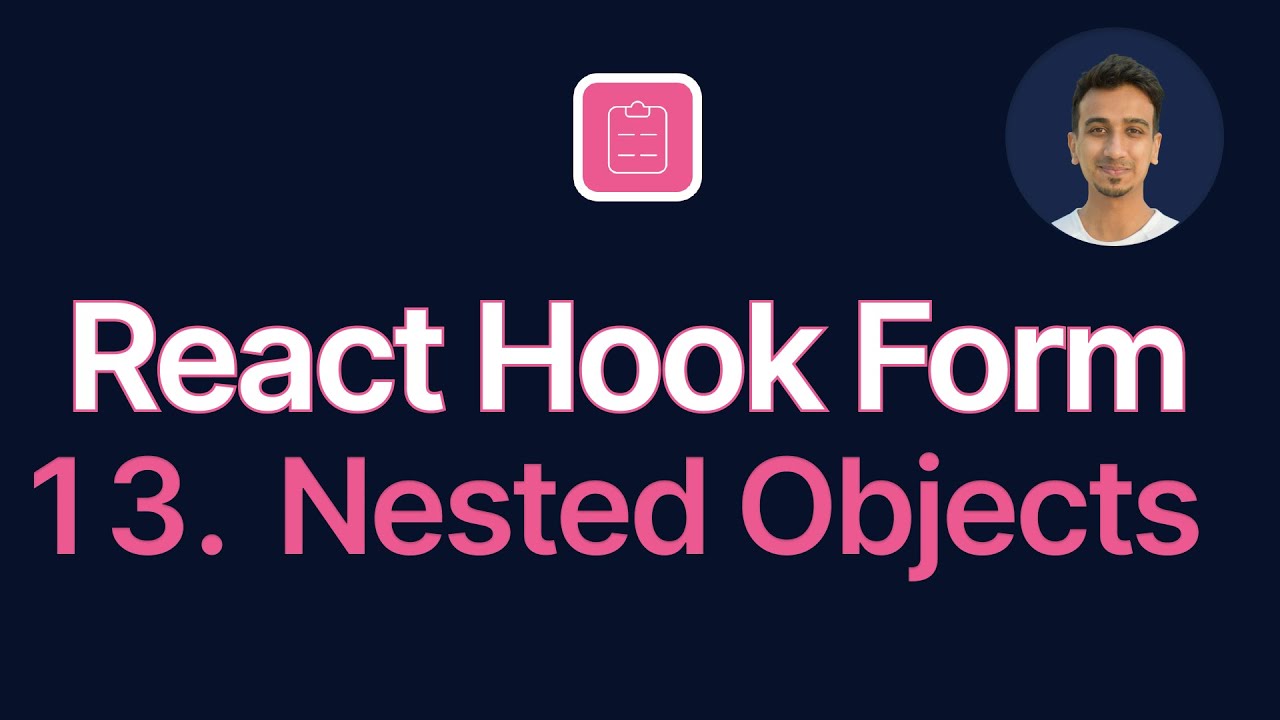React Hook Form Tutorial - 13 - Nested Objects
Unleash Your Creative Genius with MuseMind: Your AI-Powered Content Creation Copilot. Try now! 🚀
In the world of web development, creating forms is an essential task. Whether you are collecting user information, processing data, or interacting with APIs, forms play a crucial role. React Hook Form is a popular library that simplifies form handling in React applications. It provides efficient and intuitive ways to manage form data, validation, and submission. In this article, we will explore one of the advanced features of React Hook Form: nested objects.
The Power of Nested ObjectsWhen dealing with simple forms, it's easy to handle the form state with a simple object that tracks the values of each field. However, as forms become more complex, we may encounter situations where certain data needs to be grouped together. This is where nested objects come into play.
By using nested objects, we can group related data fields and store them as a separate object within the main form data object. This can be especially useful when APIs require data in a specific format, or when the database stores data in a particular structure. Let's dive into an example to understand this concept better.
An Example: Collecting Social Media ProfilesImagine you are building a form to collect information about a user, specifically their social media profiles on platforms like Twitter and Facebook. Since these two fields are related and share a common purpose, it makes sense to group them together. With nested objects, you can easily achieve this.
Step 1: Adding the 'social' Field to Form ValuesTo begin, you need to declare the 'social' field as an object in your form values. This object will have two properties: 'twitter' and 'facebook,' both of which are string fields.
Step 2: Update the Default Values ObjectNext, you will update the default values object to include the 'social' field. This involves adding a new key-value pair, where the key is 'social' and the value is an object with 'twitter' and 'facebook' as keys, each initialized with empty strings as values.
Step 3: Implementing JSX ChangesNow comes the exciting part - implementing the JSX changes. Start by duplicating the HTML code for the 'channel' field and making the necessary modifications. Replace 'html4' and 'id' attributes with 'twitter' and update the label accordingly. Don't forget to update the register function argument to 'social.twitter' as well. Repeat the process for the 'facebook' field, making the necessary changes.
Testing the Nested Object FormNow it's time to test your nested object form! Fill in the form details, and when you submit, you will notice that the form values include not only the regular fields like username, email, and channel but also the nested object 'social.' This nested object contains the properties 'facebook' and 'twitter' with their corresponding values.
As you can see, using nested objects in React Hook Form is a powerful way to group related data fields. By following the three simple steps, you can easily incorporate this feature into your complex forms, making your code more organized and efficient.
ConclusionIn this article, we explored the concept of nested objects in React Hook Form, a powerful feature that allows you to group related data fields within your forms. By following three simple steps - adding to form values type, updating the default values object, and specifying the register argument with dot notation on the nested object - you can easily implement nested objects in your forms.
Next time you encounter a complex form that requires data grouping, remember the power of nested objects in React Hook Form. It's a valuable tool that will enhance your form handling capabilities. Happy coding!
If you found this article helpful, make sure to subscribe to our channel for more exciting content. Stay tuned for our next video, where we will explore another fascinating feature of React Hook Form.
